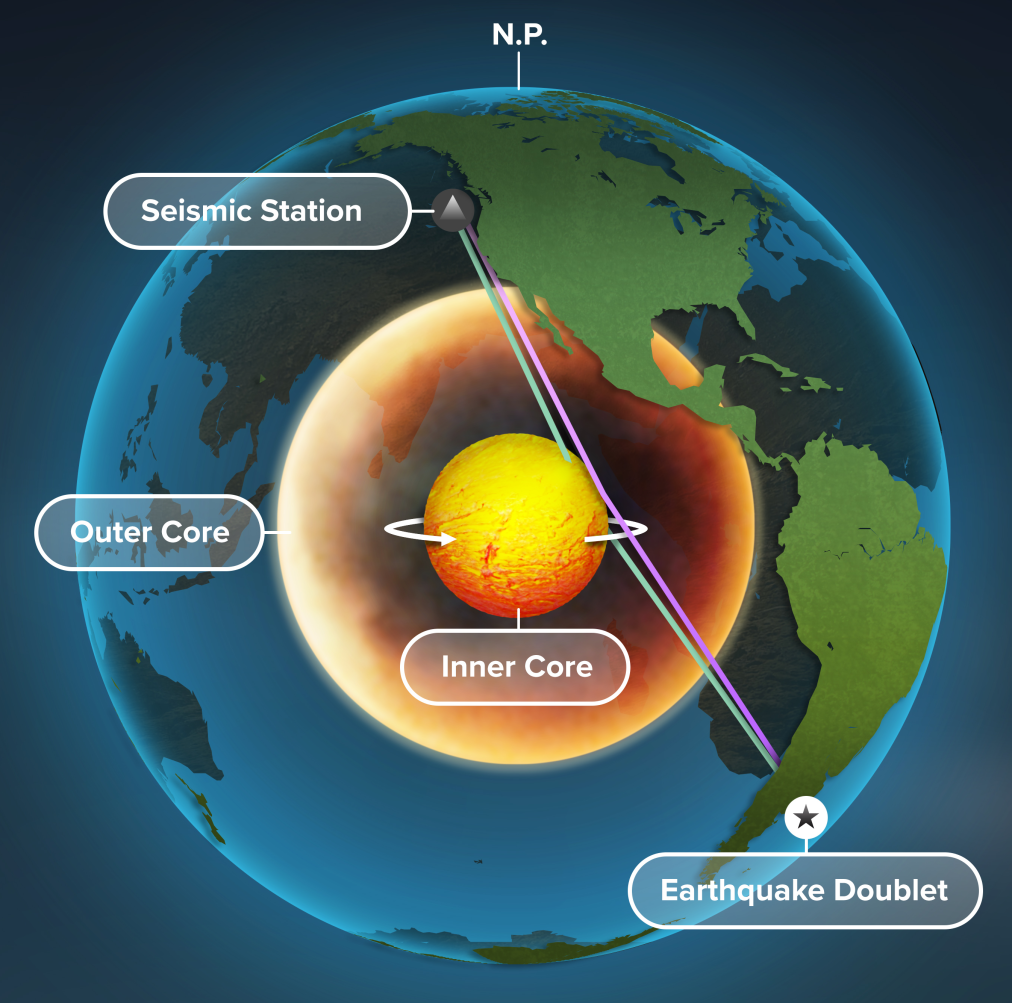New evidence for the motion of the inner core
2020-07-13
The research group of Prof. Xiaodong Song, from Institute of Theoretical and Applied Geophysics, School of Earth and Space Sciences, Peking University (PKU), recently made a new breakthrough about the inner core. Temporal changes of the inner core on decadal time scale have been confirmed by many seismological studies, especially those from high-quality repeating earthquakes. However, the origin of the temporal changes remains controversial. The new discovery resolves the controversyand provides strong evidence for pinning down the motion of the inner core.Prof. Song was a tenured professor in the University of Illinois at Urbana-Champaign (UIUC) and now is a PKU Chair Professor. This workwascompleted byDr. Yi Yang from UIUC and Prof. Xiaodong Song.
The inner core is the innermost sphere of the Earth, forming from the liquid iron-nickel outer-core as the Earth slowly cools. It has the size similar to the moon and the surface temperature close to the sun. The temporal change of the inner core was first discoveredfrom progressively earlier seismic arrivals traversing the inner corealong a particularpath.The time-varying signalhas generally been interpreted as the differential rotation of the innercorewith respect to the mantle shifting the laterally heterogeneous inner core.However, some studies suggestedthat the phenomenon is fromrapidlocalized growth or meltingat the inner core boundary and there is no inner core rotation. The dynamicsof the inner core and the convection of the outer coreare important parts ofthe geodynamo. Mechanism of theinner coretemporal provides important clues tothe generation of the geomagnetic field.Consequently, sorting out the origin of the inner core’s temporal changes is of great significance in understanding the dynamics of the core and the geomagnetic field.

New study of Earth’s inner core used seismic data from repeating earthquakes(called doublets)to find that refracted waves(blue),rather than reflected waves(purple), change over time – providing the best evidence yet that Earth’s inner core is rotating.Graphic by Michael Vincent.
From a large database of high-quality repeating earthquakes along fixed paths, Dr. Yang and Prof. Song found the time-varying signals are mostly from refractive wavespenetrating through the inner corerather than reflective wavesbouncing off the inner core boundary(see the figure). A few examplesof time-varying reflective waves from previous studies wereproved to be artifacts from clock errors of seismic stations. The key of therecentstudy is selecting a non-inner core referenceto eliminate the potential clock errors.Inthis way, they provedthat the time-varying signals, suggested previously to be from the reflective waves, are actually from the refractive waves. The most probable and simplest explanation to the observed temporal changes is a differential rotation that shifts the position of the heterogenous upper part of the inner core. A rotation rate of about 0.05-0.1° per year may reconcile all current temporal change observations from body waves, scattering, and normal mode data, but the rotation rate could vary even in decadal time scale.
This research waspublished in Earth and Planetary Science Letter. Dr. Yang is the first author and Prof. Song is the corresponding author. The seismic data in this study were obtained from Incorporated Research Institutions for Seismology Data Management Center and the Canadian National Seismograph Network. The research was supported by the National Science Foundation of the United States (EAR 1620595) and the National Natural Science Foundation of China (U1939204).
More details can be found from the original paper.
Yang, Y., Song, X. Origin of temporal changes of inner-core seismic waves.Earth and Planet. Sci. Lett. (2020). https://doi.org/10.1016/j.epsl.2020.116267
